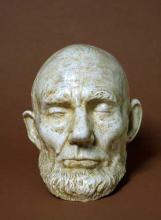
Latest News
November 26, 2013
The Information Age is glorious. At no other point in history have humans had such easy access to enormous amounts of information. Movies, books, music, and more are all at our fingertips. With the advent of 3D scanning, we can even experience objects we might otherwise never see, from museums and collections around the world.
The Smithsonian is on top of the digitalization of information. In addition to the massive amount of written material that has been digitized, the museum has added 3D printing to its arsenal, allowing easier examination or “lending” of exhibits. Now, with the new Smithsonian X 3D Collection, users can take a close-up look at history, or even print out replicas to educate and impress.
With the assistance of partners 3D Systems and Autodesk, the Smithsonian has developed a website that allows visitors to examine three dimensional images of historical treasures. Each object has been the target of a 3D scanner to bring it to life online. Certain scans are also available for download, allowing educators (or the merely curious) to print a copy of these artifacts.
“The Smithsonian is a leader in using 3-D technology to make museum collections and scientific specimens more widely available for anyone to use and study,” said Günter Waibel, the director of the Institution’s Digitization Program Office. “The Smithsonian X 3D explorer and the initial objects we scanned are the first step in showing how this technology will transform the work of the Smithsonian and other museums and research institutions.”
The objects that have been scanned so far include the Wright Flyer, a multi-wavelength 3-D reconstruction of the Cassiopeia supernova, the Cosmic Buddha, life masks of Abraham Lincoln, and a fossil whale. Visitors to the site can either simply view the objects, or read a summary about the object in question. Some pieces of the digital collection offer mini tours that explain more about the piece, with accompanying video.
“We’re honored to have played a role in preserving such invaluable pieces of history and humanity,” said Amar Hanspal, senior vice president at Autodesk. “We hope that exploring these priceless artifacts, heirlooms, fossils and scientific specimens in 3-D will generate more public excitement around science and technology—especially among students.”
Below you’ll find a video that discusses the project.
Source: Smithsonian
Subscribe to our FREE magazine, FREE email newsletters or both!
Latest News
About the Author
John NewmanJohn Newman is a Digital Engineering contributor who focuses on 3D printing. Contact him via [email protected] and read his posts on Rapid Ready Technology.
Follow DE





